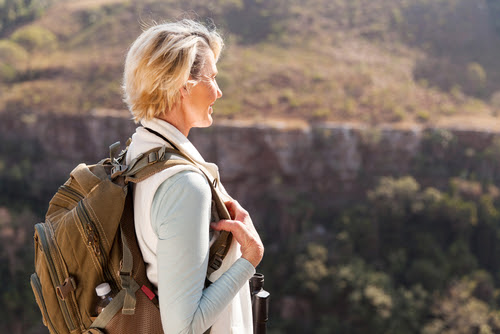Bone Density Concerns? Exercise Has a Role!
The theme for this week …
Bones and aging. If you’ve had a DEXa scan and were told you are losing bone your physician may only have you begin taking a new med. Exercise can also play a key role in your bone health. How? Read on …
Bone health 101
Let’s take a step back and ask ‘Why should we care about bone density and osteoporosis?’
- Some bones are more vulnerable: Most likely to lose mass are the forearm, mid-back, and hip with age which is why you get a DEXa score for these areas.
- Falling: As bone density thins with age, falling is more likely to result in a fracture. With bones the real issue is about falling, which is considered to be a public health concern.
- Fractures and mortality: Hip fractures often lead to immobilization, blood clots and pneumonia. Yes, it’s bad.
Risk factors around bone density which can apply to anyone:
- Steroid-related risk: Taking steroids for pain, autoimmune, or cancer treatment (i.e. prednisone, dexamethasone) depletes bone density.
- Hormone-related risk: Bone density changes are often related to estrogen changes. This is more pronounced in the first five years post-menopausal for women.
- Minimal activity in youth risk: Our childhood and adolescence are when bone density is formed via impactful activity, and the tension between growing bones and muscles. There are many reasons for inactivity, however this can have implications in later years.
Good types of stress for bones
You can more clearly understand the reasons for different types of exercise by understanding why stress is good for the bones.
Bone structure growth and re-generation requires being stressed. Bones are regenerative at every age and good bone stressors include:
- Muscular force: Muscles, tendons, and ligaments create one type of bone stress: force-coupled stress.
- Ground force: Force from our skeleton interacting with the ground causes bone stress: ground-reaction stress.
What has the research found?
Two key studies, one from 1997 and one from 2020 show interesting contrasts between general strength training, targeted weight training, and ground reaction activity (walking, skipping, jumping and jogging).
The basic insights from the studies:
- Doing nothing leads to loss of bone mass because of hormonal effects.
- Resistance training consistently helps stabilize bone mass.
- Lifting targeted heavier weights helps build bone mass, especially in weakened areas of the femur (thigh bone).
- Ground-based activity stabilizes bone mass, and often improves it in the most vulnerable areas of the hip and back.
So, what should I do? Get moving!
A base option when bone density is a concern is to get exercising so you keep the bone mass you still have.
And, add resistance training.
The better option is to choose a more strenuous exercise mode, but a safe one given your degree of bone loss.
Insight of the Week from Cara
You recently found out you have osteopenia or osteoporosis. What do you do?
I’ve had this conversation many times with clients in the office during the past year. Usually, their physician’s recommendations are weekly pills, or annual injections without providing much more information, or options.
There is so much more to the bone density topic that this newsletter is merely scraping the surface. At the end of the day exercise is key, so let’s jump into what else you can do.
Which exercises should I do?
Most of all, you want to change-up your exercise routine when you have an osteoporosis or osteopenia diagnosis.
Based upon current research, you have some options depending on what you can physically do. More insight based upon your specific needs follows.
Are you trying to build hip (trochanter) bone mass?
The bone at the hip was shown in the referenced study to be most responsive to ground-based activity. This includes walking, jogging, running, skipping and jumping. The impact from the ground is the key feature.
(With the popularity of highly padded athletic shoe soles, I wonder how much ground force many people actually get.)
Are you trying to build spinal column bone mass?
This area is much harder to effect change in. The studies show resistance training in general will stabilize the bone mass. Some heavier targeted weight training will help to rebuild, but this can also come with a risk of compression fractures.
Ground-based impact activity helps to stabilize but not will not necessarily result in bone mass increases.
Are you trying to build forearm bone mass?
There is a bit of mixed news for this area. The studies show stabilization is possible, but resistance exercise did not result in bone rebuilding. Stronger is good, just be aware that you’re not likely building bone.
How can Bridging® help?
As you decide on your exercise changes, there are two ways Bridging® can help.
- Pain: Problem-solve and resolve the source of pain keeping you from the desired exercise. (i.e. feet, knee, hip pains keeping you from walking more)
- Balance: Assess and reset muscles impacting balance to minimize your risk of falling. (More about this next week.)
Bridging® clears your aches and pains so you can better target bone healthy activities!
Do you or a family member have bone density concerns but have pain or balance issues preventing effective exercise? Contact us. We are happy to see how Bridging® can help.

